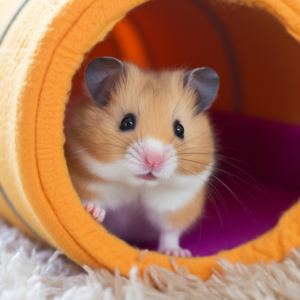Breeding hamsters is a fulfilling endeavor that allows us to contribute to the hamster population while ensuring the health and welfare of these adorable creatures. As responsible breeders, it is our duty to prioritize the well-being of our hamsters, from selecting suitable breeding pairs to providing a nurturing environment for the newborns. This comprehensive guide will walk you through the key aspects of responsible hamster breeding, focusing on animal health, welfare, and ethical practices.
Selecting Healthy Breeding Stock a. Genetic Health: The Foundation of a Strong Breeding Program b. Identifying Healthy Physical Traits c. Health Testing and Disease Prevention
Creating an Optimal Breeding Environment a. Cage Size and Design b. Appropriate Bedding and Nesting Material c. Temperature and Humidity Control
Nutrition and Diet for Breeding Hamsters a. Providing a Balanced and Varied Diet b. Nutritional Requirements During Pregnancy and Nursing c. Ensuring Hydration and Fresh Water Availability
Recognizing and Managing Hamster Pregnancy a. Understanding the Signs of Pregnancy b. Monitoring the Pregnant Hamster’s Health c. Preparing for the Birth
Birth and Postnatal Care a. Preparing a Safe Birthing Area b. Assisting with the Birth Process (If Necessary) c. Caring for the Mother and Newborns
Raising Healthy Hamster Pups a. Proper Handling and Socialization b. Monitoring Growth and Development c. Promoting Healthy Weaning and Separation
Preventing and Managing Common Health Issues a. Identifying Signs of Illness or Injury b. Common Health Problems in Hamsters c. Seeking Veterinary Care and Treatment Options
Ethical Considerations in Hamster Breeding a. Population Control and Responsible Breeding Practices b. Avoiding Overbreeding and Ensuring Suitable Homes c. Education and Responsible Hamster Ownership.
The Joy of Responsible Hamster Breeding a. The Rewards of Ethical Breeding b. Sharing Knowledge and Educating Others c. Making a Positive Impact on Hamster Welfare.
Responsible hamster breeding goes hand in hand with prioritizing animal health and welfare. By implementing the guidelines presented in this comprehensive guide, you can ensure the well-being of your breeding hamsters and contribute to the overall welfare of the hamster population. Remember, your dedication to ethical practices and responsible breeding not only benefits the hamsters themselves but also serves as an example to fellow breeders and prospective hamster owners. Let us collectively work towards a future where hamsters are bred with the utmost care and consideration for their health and happiness.



